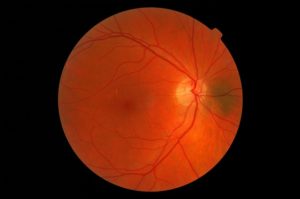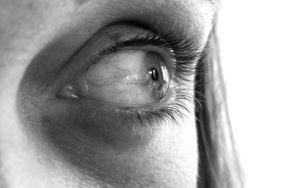Post updated: 6th May 2023
Diabetes damages the body’s small blood vessels. Diabetic blindness occurs when the blood vessels in the retina are damaged due to high blood sugar. The retina is the part of the eye responsible for sending images to the brain. You can lower your risk of diabetic retinopathy by keeping your blood sugar levels within your target range.
It is essential to keep in mind that diabetic retinopathy can cause poor vision or even blindness. However, it often gets worse over several years.
The small blood vessels of the eye get weak at first and this leads to blood seeping into the retina. This is known as nonproliferative retinopathy and is the most common form of retinopathy.

Bleeding can also lead to the formation of scar tissue. Scar tissue in the eye can pull on your retina and cause it to move from the wall of your eye. This is known as retinal detachment. Some people with proliferative retinopathy may have no symptoms at all until it is too late for effective treatment. That’s why it’s very important to have regular eye exams.
Diabetic retinopathy can also lead to swelling of the macula of your eye (macular edema). When this happens, it can worsen your vision and even lead to blindness.
Diabetic retinopathy risk factors
Anyone with diabetes (type 1 diabetes, type 2 diabetes, or gestational diabetes) can develop eye complications, including diabetic retinopathy. Having uncontrolled diabetes for long increases your risk of developing diabetic retinopathy. Other factors that increase your risk include:
- Poor control of blood sugar levels
- Tobacco use
- Pregnancy
- High cholesterol
- High blood pressure
- Being Black, Native American, or Hispanic
Types of diabetic retinopathy
1. Early diabetic retinopathy (non-proliferative)
Early-stage retinopathy occurs when the small blood vessels in the retina weaken and form tiny pockets. While you may not be able to detect the tiny pouches, your eye doctor can. These tiny pockets can leak fluid, which can cause the macula in the retina to swell (macular edema), leading to vision distortion.
Macular edema is the leading cause of vision loss in people with diabetes. About 50% of diabetes patients with retinopathy develop macular edema at some point.
2. Advanced diabetic retinopathy (proliferative)
New blood vessels begin to grow in the retina but these vessels are often weak and leak blood and other fluids into the vitreous (the gel between the retina and the lens). Minor bleeding may cause you to see dark spots floating in your vision. However, if the bleeding increases you may go blind.
The symptoms of diabetic retinopathy can be noticed in the early stage. This is the main reason why you should undergo annual eye exams to catch any problems early enough when treatment is most effective.
Advanced-stage symptoms can include:
- Floaters (dark shapes or spots in your vision)
- Blurry vision
- Trouble seeing colors
- Empty or dark spots in your vision
- Blindness (vision loss)
Complications
Complications of diabetic retinopathy (growth of weak small blood vessels in the retina):
1. Vitreous hemorrhage
The new small blood vessels bleed into the jellylike substance filling the center of the eye. A small amount of bleeding might only lead to a few small floaters (dark spots). However, in severe cases, fluid fills the vitreous cavity, leading to blindness (complete loss of vision).
Vitreous damage does not cause permanent blindness by itself. The fluid (including blood) clears from your eyes within a few days, weeks, or months. If your retina is not damaged, your vision will return to its previous state.
2. Retinal detachment
The weak small blood vessels associated with retinopathy can stimulate the development of scar tissue, which pulls the retina further away from the back of your eye. This often causes flashes of light, floaters in your vision, or even blindness (severe vision loss).
3. Glaucoma
New small blood vessels can develop in the iris (the front part of the eye) and obstruct the normal flow of blood and other fluid out of your eye, causing a build-up of pressure in the eye. This pressure damages the optic nerve (the nerve responsible for carrying images from the eye to the brain).
4. Blindness
Glaucoma, macular edema, diabetic retinopathy, or a combination of these eye conditions can cause diabetes blindness, especially if they are poorly managed.
Prevention

If you have diabetes, you can reduce the risk of developing diabetic retinopathy by taking the following measures:
· Controlling your diabetes
Make physical activity and healthy eating part of your routine. It is recommended that you get 20 – 30 minutes of aerobic activity, such as swimming or walking, each day. Take insulin or medications as directed by your physician.
· Keep track of your blood sugar levels
Monitor and record your blood sugar levels as directed. You may need to do this several times a day if you are stressed or ill.
· Ask your doctor about a hemoglobin A1C test
A hemoglobin A1C test, or glycosylated hemoglobin test, indicates your average blood sugar for the last 2 -3 months before the test. The goal for most diabetes patients is to be 7%.
· If you use tobacco, try to quit
Tobacco use increases your risk of diabetes complications, such as diabetic retinopathy.
· Keep your cholesterol and blood pressure under control
Exercising regularly, losing excess weight, and eating well can help. Some people with diabetes may also need medication.
· Pay attention to changes in your vision
Seek immediate medical attention if you notice any sudden changes in your vision or if it becomes hazy, spotty, or blurry.
Keep in mind that diabetes does not necessarily lead to blindness. Proper diabetes management can help prevent or delay complications.

